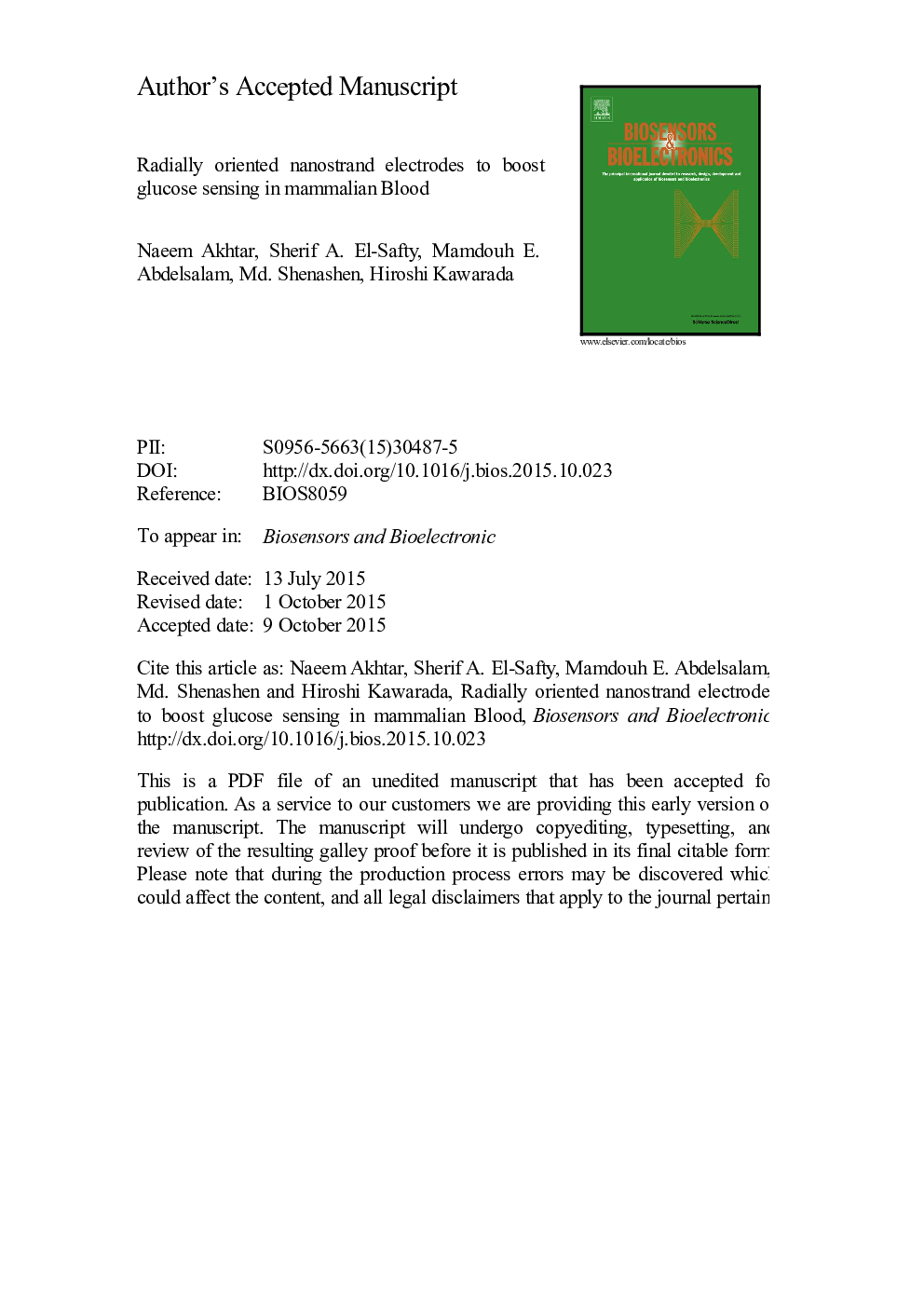| Article ID | Journal | Published Year | Pages | File Type |
|---|---|---|---|---|
| 7231691 | Biosensors and Bioelectronics | 2016 | 28 Pages |
Abstract
Architecture of nanoscale electrochemical sensors for ultra-trace detection of glucose in blood is important in real-life sampling and analysis. To broaden the application of electrochemical sensing of glucose, we fabricated, for the first time, a glucose sensor electrode based on radially oriented NiO nanostrands (NSTs) onto 3D porous Ni foam substrate for monitoring, as well as selective and sensitive sensing of glucose in mammalian blood. The simple, scalable one-pot fabrication of this NST-Ni sensor design enabled control of the pattern of radially oriented NSTs onto 3D porous Ni foam substrate. The radial orientation of NST-Ni electrode onto the interior of the 3D porous substrate with controlled crystal structure size and atomic arrangement along the axis of the strands, intrinsic surface defects, and superior surface properties, such as hydrophilicity, high surface energy, and high density led to highly exposed catalytic active sites. The hierarchical NST-Ni electrode was used to develop a sensitive and selective sensor over a wide range of glucose concentrations among actively competitive ions, chemical species and molecular agents, and multi-cyclic sensing assays. The NST-Ni electrode shows significant glucose sensing performance in terms of unimpeded diffusion pathways, a wide range of concentration detection, and lower limit of detection (0.186 µM) than NiO nanosheet (NS)-Ni foam electrode pattern, indicating the effectiveness of the shape-dependent structural architecture of NST-Ni electrode. In this study, the NST-Ni electrode is fabricated to develop a simple, selective method for detecting glucose in physiological fluids (e.g., mammalian blood).
Keywords
Related Topics
Physical Sciences and Engineering
Chemistry
Analytical Chemistry
Authors
Naeem Akhtar, Sherif A. El-Safty, Mamdouh E. Abdelsalam, Mohamed A. Shenashen, Hiroshi Kawarada,
